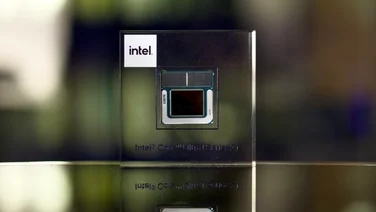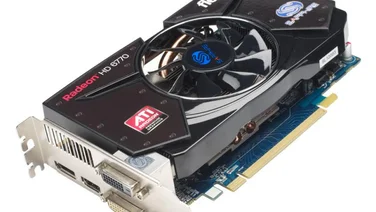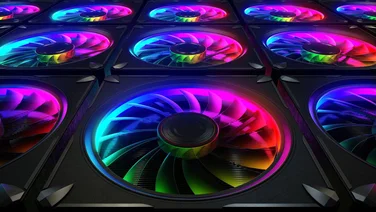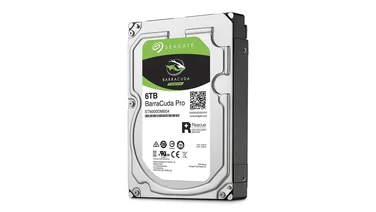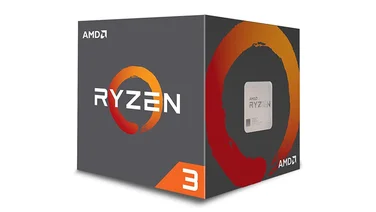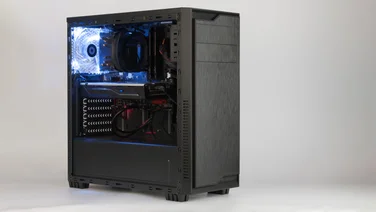To help us provide you with free impartial advice, we may earn a commission if you buy through links on our site. Learn more

The GeForce GTX 750 was the first Nvidia GPU to use Nvidia’s new, energy-efficient Maxwell architecture, which replaces the previous Kepler graphics card designs. The company claims that each Maxwell core can deliver greater performance than an equivalent Kepler core, as well as twice the performance per watt.
The GTX 750 and GTX 750 Ti reference design is so power-efficient that many cards can operate purely on the power from a PCI-Express x16 slot, without needing any extra power connectors. Each card draws a maximum 60W from the PCI-Express bus, meaning you’ll only need a 300W power supply and an empty PCI-Express x16 slot to upgrade; AMD’s closest rival in terms of performance, the Radeon R7 260x, requires a 6-pin power connector.
The main difference between the GTX 750 and the GTX 750 Ti is the number of CUDA GPU cores, amount of memory and the speed at which that memory runs. The GTX 750 has 512 CUDA cores, paired with 1GB of GDDR5 memory running at 1,250MHz, while the GTX 750 Ti increases the CUDA core count to 640, the amount of memory to 2GB and the memory clock to 1,350MHz. In the stock design, the GPU runs at the same speed across both cards: 1,020MHz, boosting to 1,085MHz where thermal limits allow.
| Card | Rating | Award | Price inc VAT | Supplier |
|---|---|---|---|---|
| Zotac GeForce GTX 750 ZONE Edition | 4 | £108 | www.amazon.co.uk | |
| Asus GeForce GTX 750Ti | 3 | £120 | www.ebuyer.com | |
| Gigabyte GeForce GTX 750Ti OC | 4 | £111 | www.scan.co.uk |
INDIVIDUAL CARDS
GeForce GTX 750
The GTX 750 is designed for entry-level gaming at up to 1080p resolutions, albeit with some visual settings reduced. Because the power requirements and heat output are so impressively low, Zotac has added a completely passive heatsink to its GeForce GTX 750 ZONE Edition. With no fan, it’s completely silent at all times, yet still managed a smooth 40.9fps in Dirt Showdown and 26.1fps in Tomb Raider at 1,920×1,080 and Ultra detail. Disabling SSAA and using the less-demanding FXAA in Tomb Raider increased frame rates to a playable 40fps average.
The card struggled with our most demanding title, Metro: Last Light Redux, managing just 9.1fps in our standard 1,920×1,080, Very High detail and SSAA test. Once we dropped quality to High and turned off SSAA we saw an improvement to 24fps, but further quality drops will be necessary to make this title fully playable.
The card’s oversized heatsink makes it unsuitable for more compact systems; its bulk, together with the fact it relies on a clear flow of air to dissipate heat, means you’ll need to make sure your case fans are up to the task of keeping it cool. The GTX 750 ZONE is around 30% more expensive than the equivalent passive AMD card, Sapphire’s Ultimate R7 250, but is around 20% faster, so is a good choice if you want some gaming power to go with your silence.

GeForce GTX 750Ti
Nvidia’s reference design was already quite compact, but Gigabyte has gone a step further with the GeForce GTX 750Ti OC. This is a low-profile card that that will fit comfortably in the most compact of cases. It’s bus-powered, meaning no extra power connectors, and Gigabyte even includes a low-profile backing plate in the box, making it ideal for slim, desktop-style home theatre PCs.
It’s still a full-featured card, with DisplayPort, DVI and two HDMI outputs on the rear and a centrally mounted fan that keeps the GPU cool. A score of 50.4fps in our 1,920×1,080, Ultra quality Dirt Showdown test proves it can cope with less-demanding games, and although it could only manage a just-playable 30fps in Tomb Raider with the demanding SSAA anti-aliasing enabled, dropping down to FXAA gave us a perfectly smooth 40fps. A stuttering 18.5fps in Metro Last Light with Very High quality and SSAA revealed the card’s limits, but lowering the image quality to High and disabling tessellation and anti-aliasing brought things back to a more playable 44fps average. The card’s compact size and bundled backing plate make it a good choice to give you some gaming power in a low-profile case, but the MSI R7 260X is nearly as quick and much cheaper, and the far more powerful PowerColor PCS+ R9 270X is just £15 more.
If space isn’t a problem, you could go for the Asus GTX 750Ti, which is about as extreme as GTX 750ti cards get. The card has a twin-fan cooling system, an out-of-the box overclock and software suite for pushing those clock speeds even further, so will appeal to anyone that likes to tweak their hardware.
The Asus GTX 750Ti powers down its fans completely when you aren’t gaming. Even with both fans spinning it’s incredibly quiet. With the GPU running at 1,124MHz and boosting to 1,202MHz, it breezed through Dirt Showdown at 1,920×1,080 and Ultra quality at 48fps, and almost managed a playable frame rate in Tomb Raider with Ultra quality and SSAA enabled. 27.5fps is still a little sluggish, but dropping to FXAA pushed frame rates up to a playable 43.1fps. If you’re after a GTX 750 Ti-based card, the Asus card has good overclocking potential, but the more flexible Gigabyte model is the better buy at this price. For anyone that doesn’t need a compact card, MSI’s R7 260X is much cheaper for similar performance.


